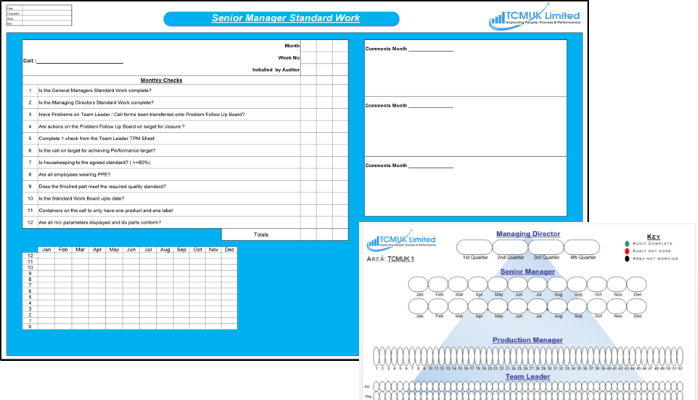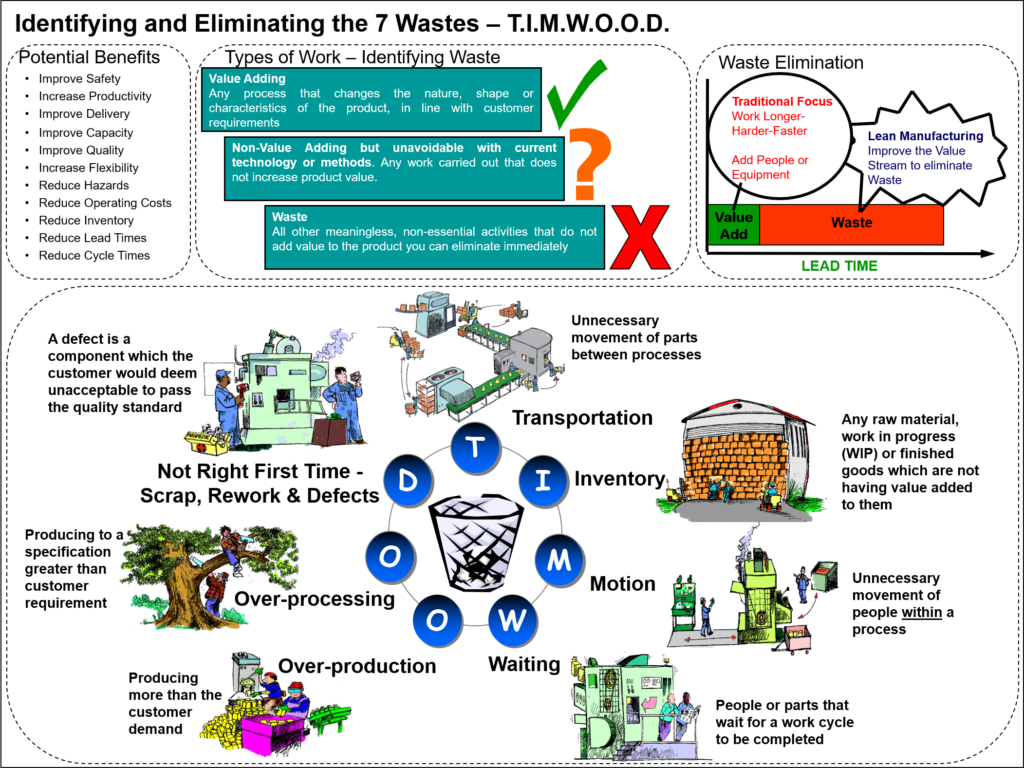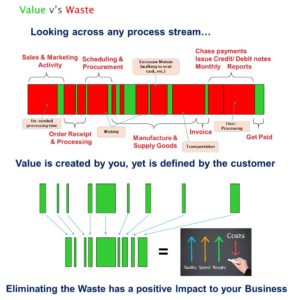I’ve walked onto more shop floors than I can count. From gleaming, high tech aerospace facilities to gritty, old school fabrication shops in the heart of the Midlands. And you know what? There’s a sound, a feeling, that’s almost universal. It’s the sound of busyness. The hum of machines, the clatter of tools, the squeak of pallet trucks, the constant footfall of people moving with purpose.
It feels good, doesn’t it? That hive of activity. It feels like money is being made, like orders are being fulfilled. You see your team working hard, sweating, moving fast. You think to yourself, “Great, everyone is flat out. We’re at maximum capacity.”
But are you?
To be honest, after years of doing this, I’ve learned that the loudest, most chaotic environments are often the least productive. The places where people seem the most rushed are frequently the ones haemorrhaging the most time and money. It’s a hard pill to swallow, but we in the manufacturing world have become experts at mistaking motion for progress. We celebrate the ‘busy bee’ without ever stopping to ask a simple, powerful question: is the work they’re doing actually adding any value?
This is where the core insight of Lean Manufacturing changes the game. It’s not about making people work harder or faster. It’s about making them work smarter by ruthlessly distinguishing between what the customer actually cares about, which is value added work, and everything else, which is non value added work. Getting your head around this one distinction is, I think, the first and most critical step toward real, sustainable improvement.
What Does ‘Busy’ Really Look Like on the Shop Floor?
Let’s get tangible. Picture one of your operators, let’s call him Dave. Dave is a great employee. He’s never standing still. He’s always on the move. But what is he actually doing all day?
If we were to follow Dave with a video camera for an hour, we might see something like this. He finishes a task at his workstation, then walks 50 feet across the floor to the parts store to get the next component. He gets there, but the part he needs isn’t in its designated spot. He spends five minutes hunting for it, finally finding it on the wrong shelf. He walks back to his station. Then he realises he needs a specific torque wrench, which isn’t at his station because someone else borrowed it. He spends another few minutes tracking it down. Then there’s the paperwork. He has to fill out a quality check form, get it signed off by a supervisor who is currently in a meeting, and then file a copy.
At the end of the hour, Dave is knackered. He feels like he’s run a marathon. If you asked him if he had a productive hour, he’d say, “Absolutely, I haven’t stopped!” And he’d be telling the truth. He has been incredibly busy.
But how much of that time was spent actually changing the product? How much of it was spent doing something a customer would happily pay for? Almost none. The walking, the searching, the waiting, the duplicating of paperwork. These activities feel like work. They consume energy and time. They fill the day. But they don’t move the needle one inch closer to a finished, shippable product. This is the illusion of productivity. It’s the frantic, exhausting, and ultimately wasteful state of being busy.
So, What Is Value-Added Work, Really?
This brings us to the most important definition in the world of operational excellence. Value-Added work is any action that physically transforms the raw material or component into something the customer wants and is willing to pay for.
It’s that simple.
It has to meet three very strict criteria:
- The customer must be willing to pay for it. Would your customer happily write a cheque for the time spent walking to the tool crib? Of course not. But they will absolutely pay for the time spent welding a perfect seam on their product.
- It must physically change the thing. The action has to transform the product in some way. Bending metal, drilling a hole, assembling two parts, painting a surface, packaging the final item. These are all transformative acts. Searching for a tool doesn’t change the product. Neither does waiting for a signature.
- It must be done right the first time. Rework is the enemy of value. If you have to spend time fixing a mistake, that is, by definition, not adding value. The initial value was supposed to be added during the first attempt.
In a typical manufacturing setting, value-added work is the welding, the machining, the assembly, the testing that confirms quality, the final packaging. It’s the magic. It’s the bit where your expertise and equipment turn basic materials into something of higher worth. And here’s the scary part, in many traditional, un-optimised manufacturing environments, if you were to honestly time it, true value-added activities might account for less than 5% of the total lead time. Think about that. For a product that takes 20 days to go from order to dispatch, you might only be physically working on it, changing it, for a single day. The other 19 days are just… waste.
The Hidden Killer: Unpacking Non Value-Added Work
If value added work is the hero of our story, then non value-added work is the villain. It’s all the other stuff. It’s the 95% of activity that adds cost and time but no value to the final product. Lean thinking categorises these activities into the famous seven (or sometimes eight) wastes. You might have heard of them, but it’s worth seeing them through this busy versus productive lens.
- Transport: Moving parts and materials around the factory. Every time you move something, you risk damaging it, you lose it, and you add zero value. Dave walking to the parts store is a classic example. Why wasn’t the part at the point of use?
- Inventory: Excess raw materials, work in progress (WIP), or finished goods. It ties up cash, takes up space, and hides other problems like poor quality or unreliable suppliers. That huge pile of WIP between process A and process B? It’s just waiting. And waiting is a waste.
- Motion: This is about the people. Unnecessary movement by your team, like bending, reaching, or walking. Dave searching for his torque wrench is pure waste of motion. An organised workstation, where every tool has its place, eliminates this.
- Waiting: This one is painfully obvious. Operators waiting for a machine to finish, for parts to arrive, for instructions, or for a supervisor’s signature. It is the most frustrating waste for any motivated employee. They want to work, but the system is forcing them to be idle.
- Overproduction: Making more of something than is needed right now. This is often called the worst waste because it causes all the others. You make too much, so you need to store it (Inventory), move it (Transport), and it might become obsolete.
- Overprocessing: Doing more work on a product than the customer requires. Polishing a surface that will never be seen, engineering a component to a tolerance ten times tighter than necessary, filling out a five page form when a single checkbox would do. It’s work, yes. But it’s pointless work.
- Defects: Creating a faulty product that needs to be repaired, reworked, or scrapped. This is a double whammy. You wasted time making it wrong, and now you have to waste more time fixing it.
Now, it’s important to add a little nuance here. There is a third category that some people talk about: Necessary Non Value-Added Work. These are tasks that don’t meet the strict value-added criteria, but you absolutely have to do them. Think about mandatory safety checks, certain regulatory paperwork, or essential financial reporting. The customer isn’t paying for the safety check on the forklift, but you can’t run your business without it. The goal with these tasks isn’t to eliminate them completely, but to minimise them, streamline them, and make them as efficient as humanly possible.
The real target, the low hanging fruit for improvement, is the pure waste. The walking, the searching, the waiting. That’s where you can transform busyness into real, honest to goodness productivity.
A Practical Checklist: How to Spot the Difference in Your Own Facility
Alright, theory is great, but how do you start seeing your own operations through this new lens? It takes practice, but you can start today by asking a few simple questions as you walk around the shop floor. When you see an activity happening, ask yourself:
- Would a customer happily pay for this specific action? (Be brutally honest).
- Is this action physically changing the product for the better?
- Is it being done correctly for the first time?
If the answer to any of these is ‘no’, you have likely found a form of waste. You have found busyness masquerading as productivity.
Let’s look at a quick example.
Busy Brian: Brian operates a CNC machine. His area is cluttered. At the start of a job, he spends ten minutes searching for the right collet and the setup sheet. He loads the material, runs the program, and then walks over to chat with a colleague while the long cycle runs. Once the part is done, he inspects it and finds a small burr. He spends another five minutes with a file, deburring the part by hand. He’s been active all that time. He’s been busy.
Productive Paula: Paula operates the same machine. Her workstation is a model of 5S organisation. Every tool is in a shadow board, and the setup sheet is in a holder on the machine. Her setup takes two minutes. While the machine runs its cycle, she performs a quality check on the previous part and gets the raw material ready for the next one. The program finishes, and the part comes out perfectly, no deburring needed, because a previous improvement activity fixed the root cause of the burrs.
Who is more productive? It’s not even a contest. Paula might look less frantic, her station might be quieter, but her output of good quality parts per hour will be significantly higher. She has eliminated the non value added work, leaving only the productive, value creating tasks.
The Secret Weapon: Making Waste Visible with Process Mapping
How do you find all this hidden waste? It’s happening all over the place, all the time. The single most powerful tool for this is to simply draw a map of your process. In Lean terms, this is often called Value Stream Mapping.
Don’t let the fancy name put you off. At its heart, it’s just about getting a big piece of paper, grabbing a few colleagues, and physically walking the path of a product. You start where the order comes in, and you end where it’s dispatched to the customer. You draw a box for every single process step. Welding, drilling, assembly, inspection.
Then, and this is the crucial part, you map the stuff that happens between the boxes. You draw in the transport links, the waiting areas, the piles of inventory. You time everything. How long does the welding take? (Value Added). How long does the part then wait for the next step? (Non Value Added).
When you’re done, you’ll have a visual representation of your entire process. It’s often a sobering moment. You might see that a product with 30 minutes of actual value added work takes three weeks to get through the factory. The ‘before’ map often looks like a chaotic spaghetti diagram, with arrows going everywhere.
The beauty of this map is that it makes the waste impossible to ignore. You can literally see the delays and the unnecessary movement. It becomes the blueprint for your improvement plan. Your team can gather around it and say, “Why does it wait for three days here?” or “Look how far we have to walk between these two steps, that’s crazy!” The ‘after’ map, the future state you design, will look cleaner, straighter, and faster. It’s a map that shifts you from a state of busy to a state of flow.
Your First Steps to Shifting from Busy to Productive
This isn’t an overnight transformation. It’s a journey of a thousand small steps. But you can start right now.
- Map a Single Process. Don’t try to boil the ocean. Pick one product family or one manufacturing cell. Get the team involved and map it out, warts and all.
- Conduct a Waste Walk. Grab a clipboard and a stopwatch. Go and stand in one area for an hour. Simply observe and make a note of every instance of the seven wastes you see. You will be astonished at what you find.
- Ask Your Team. The people doing the job know where the frustrations are. They know what wastes their time. Hold a short, informal meeting. Ask one simple question: “What stops you from having a great day at work?” Their answers will almost certainly be a list of non value added activities.
From Motion to Progress
Let’s be clear. The difference between busy and productive is not subtle. It’s the difference between running on a hamster wheel and running a race. One is exhausting and gets you nowhere; the other is focused, intentional, and moves you toward a finish line.
By learning to see the waste in your processes, you do more than just improve efficiency. You make your employees’ jobs less frustrating. You improve quality because you have fewer chances for things to go wrong. You free up cash that was tied up in inventory. You increase your capacity without buying a single new machine. You build a stronger, more resilient, and more competitive business.
This is the foundation of Lean thinking. It’s a powerful shift in perspective that allows you to achieve more with the resources you already have. If you’re ready to stop being just ‘busy’ and start being truly productive, this is the path. And if you and your team are serious about learning the tools to make this happen, then taking a structured course like our Lean Greenbelt training is the perfect next step to guide you on that journey.












